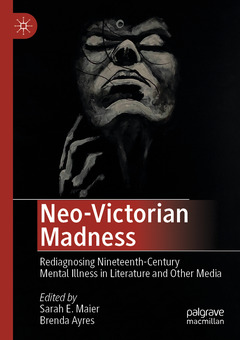Description
Neo-Victorian Madness, 1st ed. 2020
Rediagnosing Nineteenth-Century Mental Illness in Literature and Other Media
Language: English
Subjects for Neo-Victorian Madness:
Publication date: 06-2021
Support: Print on demand
Publication date: 06-2020
308 p. · 14.8x21 cm · Hardback
Description
/li>Contents
/li>Biography
/li>Comment
/li>
Neo-Victorian Madness: Rediagnosing Nineteenth-Century Mental Illness in Literature and Other Media investigates contemporary fiction, cinema and television shows set in the Victorian period that depict mad murderers, lunatic doctors, social dis/ease and madhouses as if many Victorians were ?mad.? Such portraits demand a ?rediagnosing? of mental illness that was often reduced to only female hysteria or a general malaise in nineteenth-century renditions. This collection of essays explores questions of neo-Victorian representations of moral insanity, mental illness, disturbed psyches or non-normative imaginings as well as considers the important issues of legal righteousness, social responsibility or methods of restraint and corrupt incarcerations. The chapters investigate the self-conscious re-visions, legacies and lessons of nineteenth-century discourses of madness and/or those persons presumed mad rediagnosed by present-day (neo-Victorian) representations informed by post-nineteenth-century psychological insights.
Sarah E. Maier isProfessor of English and Comparative Literature at the University of New Brunswick Saint John, Canada.
Brenda Ayres teaches online courses for Liberty University and Southern New Hampshire University, USA.
Maier and Ayres have coedited several collections of essays. The most recent are Neo-Gothic Narratives: Illusory Allusions from the Past (2020), Animals and Their Children in Victorian Culture (2019) and Reinventing Marie Corelli for the Twenty-first Century (2019).




